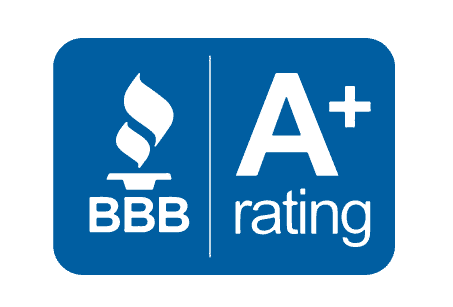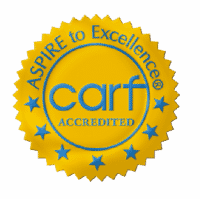
Oxycontin is one of the most dangerous and prevalent drugs in the Canadian opioid crisis.
While often prescribed as a painkiller, it is highly addictive and tolerance quickly increases with use. Evidence-based treatment is essential in overcoming Oxycontin addiction and working towards recovery.
Oxycontin – The Most Abused Opiate
Oxycontin is one of the most abused opiates on the Canadian market. Canada has the second highest consumption of opiates per capita in the world. Manufacturers initially designed the drug to gradually release the analgesic oxycodone over a twelve-hour period. Oxycodone is “an opioid analgesic usually prescribed for chronic and severe pain” and works directly on the central nervous system. While users should take it as a time-release form of oxycodone, people often tamper with tablets to ingest it quickly. This produces a variety of intense effects, including euphoria, and makes it highly addictive. As described on the Government of Canada website, “when crushed or chewed and either inhaled by the nose, injected or swallowed, the oxycodone will be released and absorbed rapidly producing a heroin-like effect euphoria.”
CAMH on Oxycontin
The Centre for Addiction and Mental Health capture the scale of the effect of Oxycontin in comparing it to another analgesic, Percocet: “In Canada, one oxycodone-CR tablet can contain up to 80 milligrams of oxycodone- the same amount as 16 Percocet tablets.” As described on Trafalgar’s website, “Because it contains such high amounts of oxycodone, [Oxycontin] has become one of the most abused painkillers on the market today. Prescription drug abuse is currently one of the biggest killers in Ontario, with about ten people dying accidentally from prescription opioids every week.”
History of Oxycontin
Oxycodone, the active ingredient in Oxycontin, is an opiate. While many people regard it very differently from other opiates such as heroin and morphine, oxycodone has similarly addictive qualities. An estimated 80% of people who seek treatment for opioid abuse are initially exposed to the substances through a legitimate prescription. Oxycontin was initially marketed by Purdue Pharma as being less addictive than other opioids, despite a lack of evidence to support this. These claims ultimately proved inaccurate. The Globe and Mail describe the progression of Oxycontin’s prevalence:
“Until the mid-1990s, medicas primarily prescribed opioids to people in debilitating pain, such as terminal cancer patients. That began to shift in 1996, when Health Canada approved Purdue’s Oxycontin, a slow-release drug designed to deliver relief over many hours. Doctors prescribed it for everything from backaches to fibromyalgia, and Oxycontin quickly became a market leader in the burgeoning field of chronic pain management.”
This trend has also spiked in recent years, with prescriptions for opioids increasing 24% across the nation between 2010 and 2014. The Government of Canada website explains how using the drug to manage pain on a prescription basis can ultimately lead to abuse: “When oxycodone-based prescription drugs are taken as directed by a physician for a short period of time, most patients will not develop a dependency for the product. However, similar to other opioids, misuse and abuse can easily lead to dependence and tolerance to oxycodone, requiring more frequent and higher doses.”
Oxycontin on the Canadian Market
Since its introduction into the Canadian market in 1996, doctors have increasingly prescribed Oxycontin for lower-level pain management. This has made it far more prevalent. This is partially due to aggressive and sometimes misleading marketing tactics towards doctors. Producers encourage physicians through various methods to prescribe the drug in cases where it is disproportionate to the patient’s pain.
As well as people developing dependence on the drug through their own prescriptions, many others have gained access to it through family members or friends’ prescriptions. As president of Purdue Pharma Canada, Dr. Craig Landau, told the Globe and Mail, “The overwhelming majority of drugs that fall into the hands of adolescents for misuse and abuse, with often tragic consequences, actually come from the medicine cabinets of legitimate patients.” Many teens initially view the drug as a “harmless high,” before developing dependence. This can also result in teens turning to “illicit street drugs such as heroin” once their supply of prescription drugs is blocked.
Failure to Curb Abuse
As a Canadian Medical Association Journal report notes, the introduction in 2012 of a “tamper-resistant” form of Oxycontin, which turns to gel when mixed with water so that the drug cannot be snorted, has done little to curb abuse of the drug: “Tamper-resistant formulations do not avert opioid dependencies as they can still be misused when taken orally, the most common route of administration in oxycodone-related deaths. Further, users can circumvent the tamper-resistant properties to allow injection.” Injection also brings with it its own risks.
As cardiac surgeon Michael Chu explained to CTV News, “When crushed and injected, fragments of the pill sometimes end up in the mixture. These shards can travel through the blood into the heart, scratching the organ’s interior and damaging valves.” This can lead to strokes, blood clots and death. Injection also carries with it the danger of shared needles, which can result in HIV, hepatitis and other serious infections.
Other Opiates
Efforts to make OxyContin more tamper-resistant may also make those who have already become dependent more likely to turn to other opiates, including heroin. There is already an extremely strong link between the two substances, with people addicted to prescription opiates such as oxycodone “40 times more likely to develop a heroin problem.” Chris Simpson, president of the Canadian Medical Association, affirms this notion, stating, “If you create a deterrent for one drug, then people just move to other drugs that don’t have that technology.”
A report from the organization also identified the concern that the drug being marketed as “more safe” will make doctors more likely to prescribe it to patients who may not require such powerful medication. They argue that instead of focusing on tamper-resistance methods, producers and healthcare organizations should focus on developing “a comprehensive strategy focused on better prescription practices, earlier recognition of abuse and increased access to effective treatment programs.”
Effects and Risks of Oxycontin
Oxycodone directly effects receptors in the brain. It increases dopamine supply to certain areas of the brain. This elicits positive endorphin responses, creating a rewarding effect and training the brain to demand more. The effects of oxycodone addiction are both physical and psychological. The effect the drug has on the brain and the physical withdrawal symptoms mean that the body demands increasing supplies. Consistent use will also lead a person to believe that they cannot manage pain without the drug. This includes the pain involved in withdrawal. This makes decreasing and ultimately ending Oxycontin use a difficult and complex process.
As is generally the case with substances, tolerance for Oxycontin increases with use. A user will often use larger amounts to achieve the desired effect, thus quickly creating a physical dependence. If the amount consumed decreases or stops, a user will likely experience withdrawal symptoms. These may include intense anxiety, muscle aches, nausea, vomiting, diarrhea, agitation, body tremors and hot and cold flashes. These symptoms will generally correlate with the amount of the drug the user is taking. This makes withdrawal an extremely difficult process for heavy users.
Prescription and Risk
Even those taking a prescribed dosage can also experience side effects, including “constipation, drowsiness, dizziness, nausea, vomiting, loss of appetite, dry mouth, and itching.” Higher doses can also result in “severe weakness, shallow breathing, clammy skin, confusion, slowed heartbeat, and seizures.” Overdose can also result in respiratory arrest, which may prove fatal. Signs of Oxycontin overdose may include laboured or slowed breathing and extreme sleepiness. Oxycontin may also combine dangerously with caffeine, nicotine, alcohol and a variety of common medications, including codeine, anti-histamine, protease inhibitors and certain beta blockers.
Oxycontin Addiction Treatment
Initiating treatment for Oxycontin addiction can be a daunting process. The drug is so addictive, and the effects of withdrawal so severe, that people become trapped in cycles of abuse. Fortunately, evidence-based treatment options are available to manage initial detox and implement sustained recovery. Physicians will often provide medication in the early stages of recovery in order to manage withdrawal symptoms. This helps the client through the period in which the drug leaves their system. It reduces the likelihood of a return to using to ease their physical symptoms. The user’s dependence gradually reduces and they can begin other forms of treatment.
Treatment providers will sometimes prescribe maintenance medication after detoxification is complete. This medication acts on the same receptors in the brain as Oxycontin or another drug, but in much smaller doses. This helps to reduce cravings. Medics gradually reduce doses until a person can manage without medical assistance.
Co-Occurring Addictions
Oxycontin addiction also frequently occurs alongside other addictions due to psychological or environmental factors. This can add to the complexity of treatment. Trafalgar Addiction Treatment Centres’ clinical and counselling staff members are all experienced in treating concurrent conditions and their underlying causes. We design individualized, evidence-based treatment programs to ensure that we strong support. In this way, the client works with their treatment provider to form a strong foundation for lasting recovery.
Group counselling and individual therapy both play central roles in evidence-based treatment. Project Know describe the way in which they provide support:
“Group therapy helps the person address his or her drug use with others who understand what he or she is going through under the guidance of a trained therapist. Individual therapy provides a venue for self-assessment that can help the recovering user understand how drug use has impacted his or her life and investigate any underlying psychological issues that might hamper recovery.”
Therapy and Counselling for Oxycontin Addiction
Therapy and counselling allow a client to identify the causes and consequences of their addictions. They also help them to identify potential relapse triggers. They can then work alongside dedicated staff members to develop methods for coping with these triggers and underlying causes. We also use Cognitive Behavioural Therapy to confront damaging habits and thought patterns and develop resistance to them. Trafalgar’s counselling staff are all highly dedicated and have great experience in doing this work. Our clinical staff are all qualified to at least master’s level and use the most evidence-based, compassionate treatment methods. This ensures that clients receive the best possible support in building a foundation for recovery.






[…] http://urbanchristiannews.com/category/christian/feed/ https://trafalgarresidence.com/blog/oxycontin-symptoms-effects-addiction-treatment/ https://familyservicesoc.org/13-reasons-why https://onemomtalking.com/tag/recovery-centers/ […]